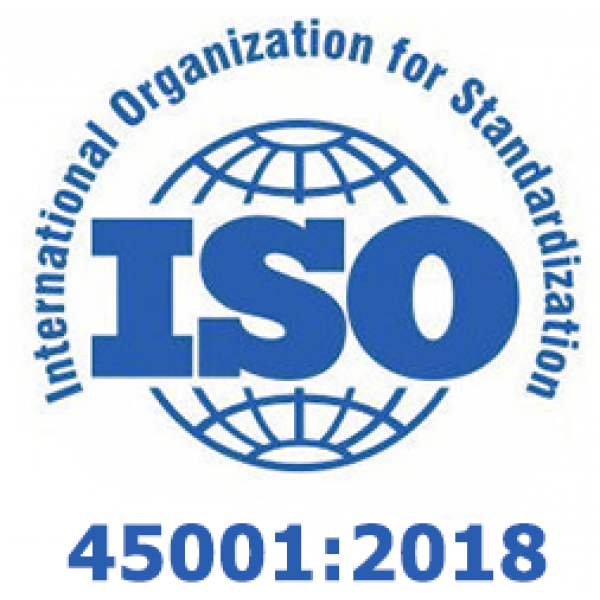The Benefits of Occupational Health and Safety Certification
Occupational health and safety should be a top priority for any business. Ensuring your employees work in a safe environment and providing protection from hazards not only protects your workforce, but also benefits your bottom line. By implementing an occupational health and safety management system (OHSMS) and obtaining certification, organizations can proactively identify and control risks, reduce accidents and injuries, improve productivity, and enhance their reputation.

Certification to an internationally recognized standard such as ISO 45001 demonstrates a company's commitment to employee safety. Aligning with ISO 45001 allows organizations to integrate occupational health and safety into their overall management system, following the Plan-Do-Check-Act cycle to continually improve. Through systematic hazard identification, risk assessment, and implementation of controls, companies can reduce workplace incidents and promote wellbeing. Preventing accidents and injuries avoids costly downtime and disruption, keeping operations running smoothly.
The Benefits of Occupational Health and Safety Certification
Occupational health and safety should be a top priority for any business. Ensuring your employees work in a safe environment and providing protection from hazards not only protects your workforce, but also benefits your bottom line. By implementing an occupational health and safety management system (OHSMS) and obtaining certification, organizations can proactively identify and control risks, reduce accidents and injuries, improve productivity, and enhance their reputation.
Certification to an internationally recognized standard such as ISO 45001 demonstrates a company's commitment to employee safety. Aligning with ISO 45001 allows organizations to integrate occupational health and safety into their overall management system, following the Plan-Do-Check-Act cycle to continually improve. Through systematic hazard identification, risk assessment, and implementation of controls, companies can reduce workplace incidents and promote wellbeing. Preventing accidents and injuries avoids costly downtime and disruption, keeping operations running smoothly.
A certified OHSMS helps engrain a culture of safety, where employees actively participate in identifying hazards and improving procedures. Training employees on safe work practices and involving them in health and safety initiatives empowers them to look out for themselves and coworkers. Healthy, safe, and engaged workers are more productive, reducing absenteeism and turnover.
Occupational health and safety impacts an organization's reputation and relationship with stakeholders. Consumers and clients are attracted to companies that value corporate social responsibility. Certification provides objective evidence that appropriate safety practices are in place, building trust and credibility. This can give certified companies a competitive edge over those without formal OHSMS implementation.

Obtaining ISO 45001 or other internationally recognized certification also facilitates access to new markets where certification is required. Companies certified to the same OHS standard are able to seamlessly integrate health and safety processes when working together.
While developing, implementing, and certifying an OH&S management system requires commitment and resources, the benefits far outweigh the costs. As the famous quote states "Safety doesn't happen by accident." By taking a proactive approach to identifying and controlling hazards along with obtaining independent certification, organizations can reduce workplace incidents, boost productivity, enhance their reputation, and demonstrate social responsibility. The health, safety and wellbeing of the workforce is both a moral and business imperative. A certified OHSMS helps engrain a culture of safety, where employees actively participate in identifying hazards and improving procedures. Training employees on safe work practices and involving them in health and safety initiatives empowers them to look out for themselves and coworkers. Healthy, safe, and engaged workers are more productive, reducing absenteeism and turnover.
Occupational health and safety impacts an organization's reputation and relationship with stakeholders. Consumers and clients are attracted to companies that value corporate social responsibility. Certification provides objective evidence that appropriate safety practices are in place, building trust and credibility. This can give certified companies a competitive edge over those without formal OHSMS implementation. Obtaining ISO 45001 or other internationally recognized certification also facilitates access to new markets where certification is required. Companies certified to the same OHS standard are able to seamlessly integrate health and safety processes when working together.
While developing, implementing, and certifying an OH&S management system requires commitment and resources, the benefits far outweigh the costs. As the famous quote states "Safety doesn't happen by accident." By taking a proactive approach to identifying and controlling hazards along with obtaining independent certification, organizations can reduce workplace incidents, boost productivity, enhance their reputation, and demonstrate social responsibility. The health, safety and wellbeing of the workforce is both a moral and business imperative.